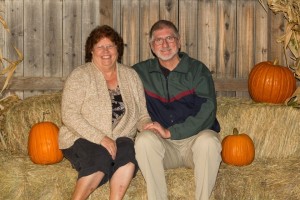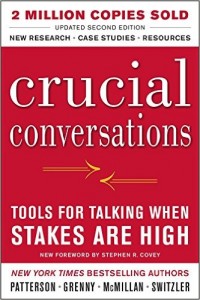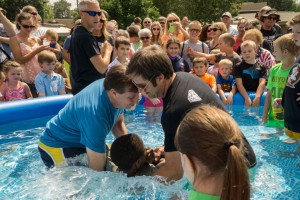By Stan Rieb
Last month we noted James Emery White’s blog Ten Steps to Immediate Church Renewal and Growth (that most churches will refuse to take). As I said, I would like to highlight a couple of those points that I have seen in the churches I have been working with through Ministry Mappings, leadership trainings and pastor coaching.
Let’s take Pastor White’s first point –
“Simplify your structure by putting the authority to make most decisions related to the practice of ministry in the hands of those with responsibility. Translation: let your leaders lead.”
Pastor White shared two important thoughts in that one point – simplifying structure and let leaders lead.
When I was the mayor of the very substantial community of Chugwater, Wyoming – what was not understood by some in the community, was that while their neighbor’s dog running loose may have seemed like a significant issue that I as Mayor was to address post haste, there were issues of greater significance. We as a town had to invest in and maintain the infrastructure of the community – streets, water, sewage treatment, communication and power distribution. You quickly learn the hazards of an aging infrastructure.
Many churches are built on an aging infrastructure. They were designed, like the infrastructure of the town of Chugwater, for a past era or culture. The infrastructure of Chugwater was built for a time when people had one bathroom in their house, water was relatively cheap to provide, galvanized pipe was the product of choice to deliver that water and streets were not paved because it was not that long ago that the framers and ranchers rode their horses to town.
Most church organizational structures and the documents that support them come out of the late 1940’s and early 1950’s. The post-World War II culture which highly valued nationalism and democracy, was transferred into the organizational structure of the church. Congregationalism, business meetings, committees and board structure were valued as cultural, and then justified as Biblical norms. To have lengthy and detailed governing documents that were iron clad and unchangeable was both Biblical and patriotic. But much has changed in the intervening years since the 50’s. Each generation since has had differing values when it has come to such things as governance and polity. And subsequently the application of each is justified as “the” biblical model.
The advancement of our consumer culture and the technological revolution have irreversibly altered the world, and more specifically our culture. If our local communities are our church’s primary mission fields, with their unique cultures, then Pastor White’s challenge is a crucial one: How can we simplify our structure so that we can “put the authority to make most decisions related to the practice of ministry in the hands of those with responsibility?” How can we embrace our identity as “sent ones?”
John Kaiser in his book, Winning on Purpose talks about policy governance, or as I call it, an Accountable Leadership Model. It is the idea of implementing a structure that clearly defines responsibility, authority and accountability in relation to a ministries mission or purpose. The end of this is what Pastor White shared – “it lets leaders lead.” This model includes simplifying your governing structures and documents, aligning ministries and assessing roles to fulfill the Great Commission mandate.
Here are a few questions to consider:
- Do your organizational structures reinforce an Ephesians 4:11-13 ministry – leaders engaging the congregation in the gospel ministry?
- Do they give ministry leaders a clear understanding of their responsibilities through job description and ministry goals aligned to the churches’ ministry goals?
- Are those ministry leaders given the authority within the guidelines of those responsibilities?
- Have you defined a means of accountability focused on producing effectiveness and success?
If any of this sounds interesting, I would love to talk with you and the leadership of your church about simplifying your structures to help you accomplish the purpose of reaching your community and building up the body of Christ. Contact me at stan.rieb@rmcn.org.







 It’s easier than ever to put up an attractive, welcoming website even if you aren’t a designer.
It’s easier than ever to put up an attractive, welcoming website even if you aren’t a designer. 1. Mobile Friendly: This aspect of church web design has rapidly become one of the most important considerations for any website.
1. Mobile Friendly: This aspect of church web design has rapidly become one of the most important considerations for any website. 6. Most Important Content Above the Fold: Those of you that still remember newspapers know that “above the fold” refers to the part of the paper visible when it’s folded in half widthwise. Newspapers typically put their most attention grabbing images, headlines, and stories above the fold.
6. Most Important Content Above the Fold: Those of you that still remember newspapers know that “above the fold” refers to the part of the paper visible when it’s folded in half widthwise. Newspapers typically put their most attention grabbing images, headlines, and stories above the fold. 9. On page SEO: SEO may sound intimidating, but it doesn’t have to be when it comes to a church context. SEO is a skill and expert SEOs are very much in demand, but there are a host of things you can do within your website to help you stand out in local search.
9. On page SEO: SEO may sound intimidating, but it doesn’t have to be when it comes to a church context. SEO is a skill and expert SEOs are very much in demand, but there are a host of things you can do within your website to help you stand out in local search.


 I am a Jeopardy junkie! Like many, I enjoy watching to see if I can get the response before the contestant on TV. I am amazed with the trivia that is stored away in my brain. Mind you I may not be able to recall where I left my cell phone ten minutes ago, but tell me “From Middle English for “to chop”, it means to bargain over a price” and instantly I know “What is haggle?”
I am a Jeopardy junkie! Like many, I enjoy watching to see if I can get the response before the contestant on TV. I am amazed with the trivia that is stored away in my brain. Mind you I may not be able to recall where I left my cell phone ten minutes ago, but tell me “From Middle English for “to chop”, it means to bargain over a price” and instantly I know “What is haggle?”